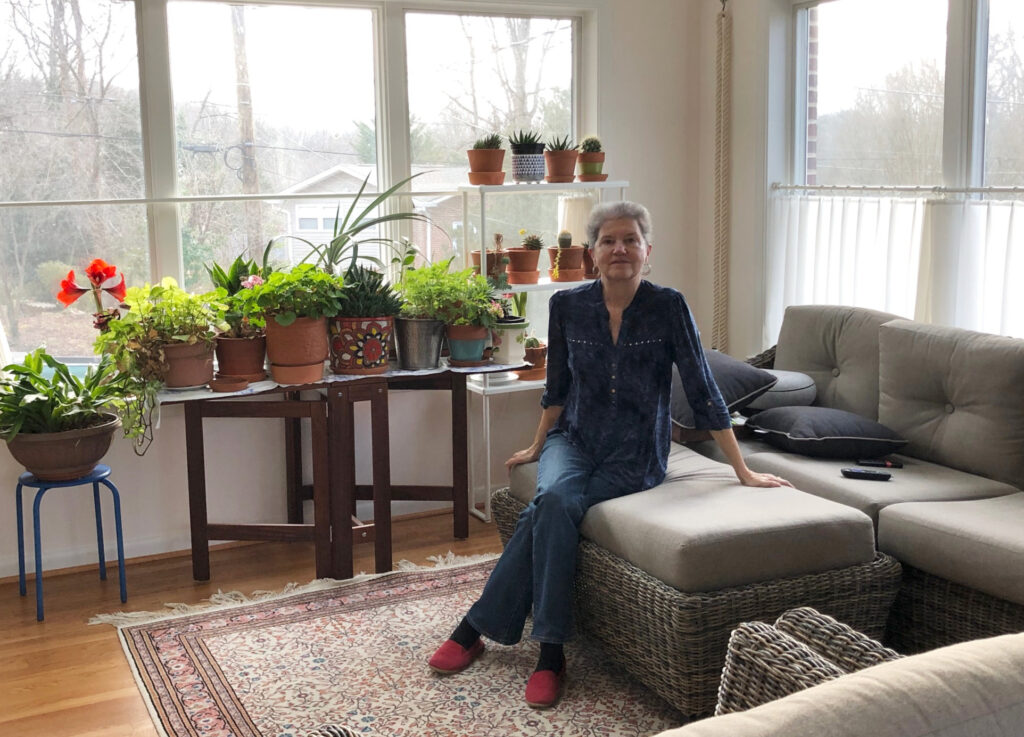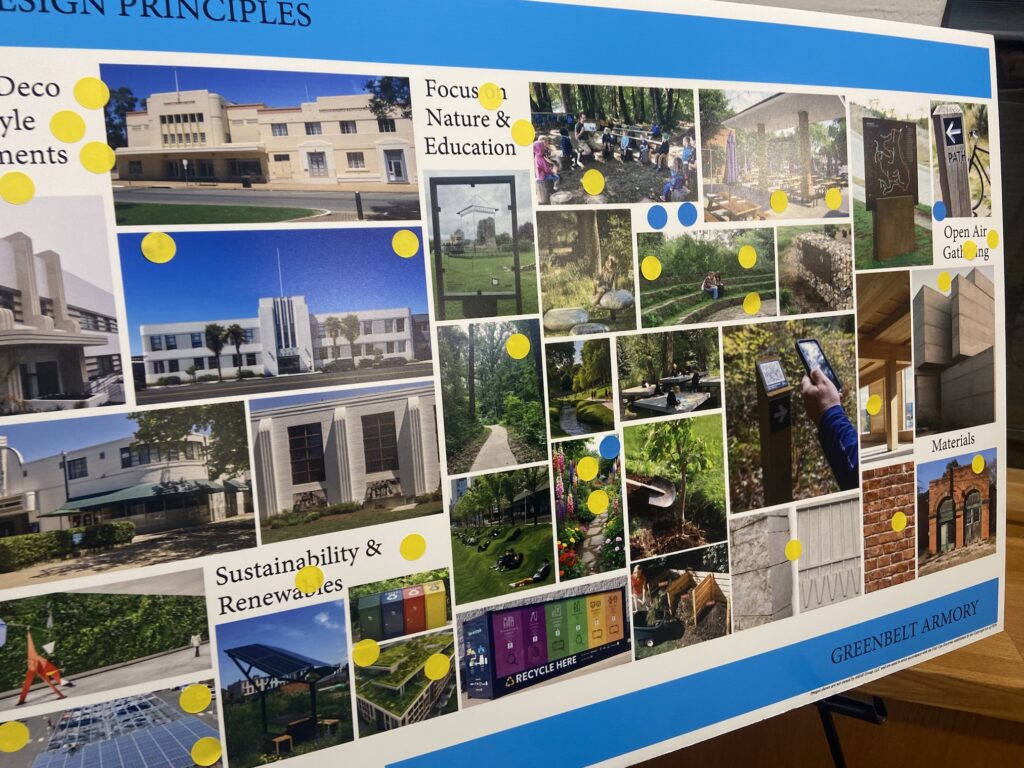Part Two of a Two-Part Story
Marc Siegel, Heather Hart, Eva Garin, Hopi Auerbach, Lesley Kash, Dorothy Dobson and Jonathan Murray all moved away from their Greenbelt childhood homes, though some didn’t go far.
Siegel moved from Maplewood Court to then-Springhill Lake Apartments and College Park while attending the University of Maryland; his first homes with wife Diane were in GHI and on Rosewood Drive. Around 2000, father Harold Siegel died and his stepmother sold them the house.
Hart left her Ridge Road GHI home for school and work, returning to help father Jerry care for mother Marie. Hart and her father now live there together.
Garin left Lakeside Drive for college, graduate school and married life in Bowie. After father Robert died, mother Sonia moved to Bethesda and sold her house to Eva and husband Jim Cowan in 1987.
Auerbach moved from her Ridge Road GHI home to D.C. in 1973 for a job, tiny apartment and disco dancing four nights a week, later living in Germany in the early 1980s. After living in Cold War-divided Germany amid World War II damage, she returned to Greenbelt to live with dad Bob Auerbach, grateful that her hometown wasn’t destroyed, and she could travel freely without fear of arrest.
Kash left Woodland Way in 1976, later living around the world with husband Hank, and her parents and sister moved elsewhere in Greenbelt. In the early 2000s, the house went up for sale while Lesley and Hank were visiting D.C. Sister Kim Kash saw the sign going up and called, catching Lesley and Hank at a museum. They rushed home and made an offer, no decision, it was fate. The seller was charmed and their story trumped several better offers. After four long years of renting the house out while working abroad, they finally came home in 2007.
Dobson briefly moved to Adelphi while attending the University of Maryland. She couldn’t wait to get out of the house when she and Norm Dobson married in 1984 and moved to University Square Apartments, as her parents prepared to sell and move to Ohio. Father Fred found that buyers were reluctant upon seeing things he hadn’t fixed with eight children and little money, including a failed dishwasher and wall oven whose empty spaces he covered with cabinet doors. They also noticed the lack of air conditioning, with ceiling holes to circulate air to the finished attic, and that closet staircase to the attic.
Fred started working on Dorothy to buy the house: “No, I’m not doing it.” Then he started on Norm, offering a 5 percent mortgage when 13 percent was typical. She still wasn’t convinced. Finally she made a renovation list, to which Fred quickly agreed. He removed the hallway to turn the bedroom into a dining room, removed its closet and added a staircase banister, rear window and door. He filled the ceiling holes and added a deck.
When Dorothy and Norm moved in, the house came with two brothers and a friend in the basement, who stayed for 14 years. Fred and Dorothy visited for a few weeks (then months) in winter. Dorothy and Norm hosted family Thanksgivings and Christmases for 10 years, and had children.
When Murray first saw Greenbelters moving away and returning, he believed they “couldn’t hack it in the real world.” He walked to St. Hugh’s School, downhill from his Ridge Road passive solar house through the woods to Greenhill Road and the Stream Valley Path. His family lived in a small walkable English town for three years and experienced European public transport. After he married fellow Greenbelter Liz Mullen Murray, they moved to Michigan where they found a car-centric environment without walkways, requiring driving everywhere. “It wasn’t until I went to Michigan that I saw why people moved away and came back.”
They returned to Greenbelt, to GHI and then Empire Place, from which their children walked through the woods up the hill to grandparents Joe and Alice and Greenbelt Elementary School.
In 2013 Jonathan and Liz considered buying a farm, upon which Joe and Alice thought, “Why are we still here if they’re leaving?” and immediately bought a GHI home. Jonathan, Liz and their three children moved into the family home in winter 2013-2014. Three-year-old Lucy looked through the south windows through the bare trees downhill to Empire Place house lights in the dark, exclaiming, “Look! Look at the village!”

Making It Their Own
Garin and husband Jim made her grandfather’s upstairs bedroom and bathroom their own, for its light and backyard access. They added skylights to the cathedral ceiling and opened the kitchen to the great room. She removed her mother’s dark drapes, today having no window coverings on the floor to ceiling windows at front and back. “I love being part of nature. You can’t see me from the front, and there’s no one in the backyard except the beaver and the fox and the deer.”
Auerbach’s dad Bob Auerbach moved to Charlestowne North and Green Ridge House, and then back home. At that point, they built an addition with a bedroom, second bathroom and porch, so he could live on the first floor.
Heather Hart and her father have changed little in their home, but are planning some painting.

Siegel converted his teenage bedroom to a workout room, renovated the kitchen and created a TV room. He added his back yard decorations on the lake path, inspired by daughter Sydney’s Halloween birthday.
Murray removed a koi pond, enclosed an interior second floor balcony space as his home office, and modified the enclosed sunroom next to the south facing windows to convert it to living space, now called the sunspace, his favorite room. His and Liz’s children don’t use the garage as a clubhouse as he did, instead gravitating to the rear deck, which was enlarged during the pandemic.
Liz said, at first changes were slow and felt weird. Jonathan’s father liked seeing how they used every part of the house. She said his mother was more reticent but has warmed up.
Kash said there was a lot not to like about the house she loves, which she is spending her retirement fixing. She and Hank replaced the tiny bedroom with a closet, dressing room and bathroom for the master bedroom. They added a French door to open the back wall to a deck, stairs, patio and screened porch, and added a front patio. There is now a large, bright room over the carport, and the kitchen was renovated for a more functional layout. The woods behind her house, once a scary wilderness, are now her secret garden, where she added a vintage wrought iron gate for access, cleared ivy and grows native plants and hangs art from trees.
Mother Dorothy Baluch decorated with dark greens and dark curtains. Dobson repainted to make the house her own with pastel colors and sheer white curtains. The foyer, kitchen and dining room are a pale blue-green, as are shelves in the bisque living room. She also painted over sister Barbara’s hobbit and Emma Peel/Avengers wall paintings, for which siblings still give her grief. She and Norm enlarged a small attic room with a sloped roof and dormer windows before their second son was born. He feels the biggest change was replacing the vinyl kitchen floor with wood extending through much of the first floor; visitors said, “Oh, the house looks completely different.” She remembers dad Fred asking, “Why wasn’t it this nice when we lived here?” “Because you had eight children!” Her siblings are comfortable visiting, despite their trips to the cereal cabinet ending after she rearranged, when they exclaimed, truly upset: “Why isn’t the cereal here?!”
Home for Good
Hart feels good to be home, raising carnivorous plants and orchids, watching birds, beginning a graduate degree and preparing to raise Irish terriers again.
Auerbach shares her home with partner John Garner, for whom the dining room is a home office. She shelters feral cats on her back porch, and inside, prominently displays her fourth grade Siamese cat portrait, with rice she dyed and glued, and eyes of broken glass from McDonald Field.
Thinking of the changes she’s made to her home, Kash said her mother “would have liked it, I think, but maybe wondered.” In childhood her house was just home; now it has become a family member.
Lucy Murray, now 13, says she can imagine living in her home as an adult, liking the openness, sun and familiarity. Liz Murray loves its location and sun. Jonathan said, “I’m very appreciative of what we have, the space and the location. Every so often we talk about moving, but there are too many pros to living here.”
Dobson thought she and Norm could never afford a house and is thankful they bought her parents’ home. “I love opening the curtains and the sun coming in, and with the two of us, it’s the perfect size,” she said. “I feel like it’s mine, though it’s taken a long time. We did look at other communities, but there was never any place like Greenbelt that we wanted to go to. It ended up just being the perfect place for us.”
Siegel said his children loved growing up in Greenbelt, and his daughter lives in GHI with her fiancé (also from Maplewood). He doesn’t take vacations, feeling he is on vacation in his back yard on the lake, kayaking and photographing its wildlife. “I just felt like this was the perfect place to be. I don’t think I could find a better place, and I don’t want to look.”
Garin’s late husband Jim loved their home and Greenbelt: “He thought the place was spectacular.” Son Ethan frequently visits and uses the entire house. “He loves being here, I can see it in his face,” as does his girlfriend, who goes birding with a neighbor and to Community Center workshops.

Though many of her neighbors are new, the sense of community and looking out for each other remains. Her family has left their mark. During family gatherings, she is sure she smells smoke in her grandfather’s bathroom: “I think my grandfather’s here.” She looks out her back windows at azaleas her mother bought at Giant, now 50 years old and huge. The azaleas are blooming now, and her backyard is coming to life.





